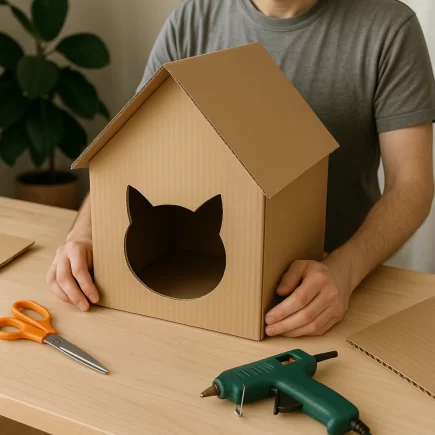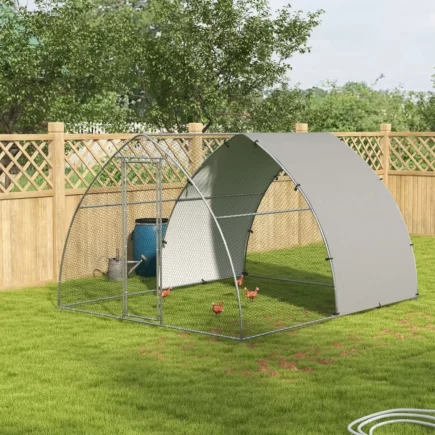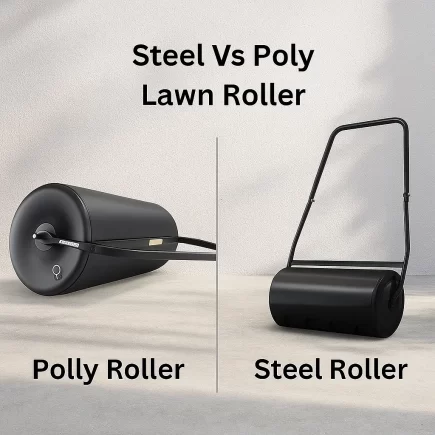A ceiling fan keeps your home comfortable year-round, circulating cool air in summer and redistributing warmth in winter. But when it starts to wobble, it’s more than an annoyance; it’s a warning sign. A wobbly fan can make noise, waste energy, and over time, loosen its mounting hardware.

The good news? You don’t need to replace it. With a few basic tools and about an hour of work, you can fix a wobbly ceiling fan safely and effectively. This complete guide covers everything, from diagnosing the cause to balancing the blades for smooth, quiet operation.
Safety First: Turn Off Power and Prepare the Work Area
Before any work begins, prioritize safety. Ceiling fan repairs involve electrical and mechanical components.
Power Down Completely
Turn off the power at the circuit breaker, not just the wall switch. Some fans have separate light and motor circuits that can still carry current.

Prepare the Work Zone
- Set up a sturdy ladder directly under the fan.
- Ensure the ladder stands on a flat, stable surface.
- Lay down a drop cloth to catch dust or screws.
- Keep a flashlight handy for better visibility.
Once your setup is secure, you’re ready to get started.
Tools and Materials You’ll Need
| Tool / Material | Purpose |
| Screwdriver (Phillips & flathead) | Tighten fan screws and bolts |
| Step ladder | Safely reach the ceiling fan |
| Tape measure | Check blade alignment |
| Microfiber cloth or duster | Clean blades and motor housing |
| Ceiling fan balancing kit | Correct uneven blade weight |
| Replacement blades or arms (optional) | Fix warped or damaged parts |
| Fan-rated electrical box or brace (optional) | Replace weak ceiling mounts |
Step 1: Clean the Fan Blades and Motor Housing
Dust is one of the simplest causes of imbalance but often the most overlooked.

How to Clean Fan Properly
- Let the blades stop completely after turning off the fan.
- Wipe each blade top and bottom using a microfiber cloth or extendable duster.
- Clean from the fan’s center outward.
- Use a damp cloth for sticky spots, then dry well.
- Wipe the motor housing and downrod.
Pro Tip: If wobbling improves after cleaning, you may not need further work. If not, move on to tightening.
Step 2: Tighten Screws, Blade Arms, and Downrod Hardware
Loose screws are the most common cause of fan vibration. Tightening them ensures stability.

Check and Secure These Areas
- Blade Screws: Tighten where each blade meets the arm.
- Blade Arms: Make sure each is firmly attached to the motor housing.
- Downrod Connection: Remove the canopy to access and secure screws at the bracket.
- Canopy Cover: Tighten evenly to prevent rattling.
- Light Kit (if attached): Confirm it’s snug and not vibrating.
Tip: Tighten screws diagonally for even pressure. Avoid over-tightening, which can distort parts.
If the wobble persists, it’s time to inspect the ceiling mount.
Step 3: Inspect the Ceiling Mount and Electrical Box

Even balanced blades can wobble if the ceiling mount isn’t solid.
Inspect the Mounting Bracket
- Remove the canopy cover to expose the bracket.
- Wiggle gently, it should be completely rigid.
- Tighten any loose screws or bolts.
Check the Electrical Box
The electrical box should be fan-rated, able to hold 35–70 pounds.
| Box Type | Supports Ceiling Fan? | Recommendation |
| Plastic light fixture box | No | Replace immediately |
| Metal fan-rated box | Yes | Securely attach to a joist |
| Adjustable fan brace kit | Yes | Great for retrofits or weak joists |
If your box isn’t rated for fans or feels loose, replace it with a fan brace kit to ensure long-term safety.
Step 4: Measure and Align the Fan Blades

Uneven blade height is a frequent reason for wobbling.
How to Measure and Align the Fan Blades
- Turn the fan off.
- Use a tape measure to measure from the ceiling to the tip of each blade.
| Blade No. | Difference | Adjustment |
| 1 | 0 | None |
| 2 | +0.25 | Bend upward slightly |
| 3 | 0 | None |
| 4 | -0.25 | Bend downward slightly |
| 5 | 0 | None |
Note:
- Bend the metal arm, not the blade itself, to avoid damage.
- If the wobble continues, you’ll need to balance the blades.
Step 5: How to Balance a Ceiling Fan
Balancing evens out blade weight so they spin uniformly.
Using a Balancing Kit

Most balancing kits include a plastic clip and adhesive weights.
How to Use Fan Balancing Kit:
- Ensure all screws are tight.
- Attach the balancing clip halfway along one blade’s edge.
- Turn the fan on low and observe.
- Move the clip closer to or farther from the motor to find the smoothest position.
- Repeat on other blades.
- Once the wobble disappears, attach the adhesive weight on the same spot and remove the clip.
After balancing, run the fan at medium and high speeds to confirm stability.
Step 6: DIY Balance Fixes Without a Fan Balancing Kit
If you don’t have a balancing kit, use simple household alternatives.
| Item | How to Use | When to Use |
| Coin (penny/nickel) | Tape to top of blade with electrical tape | Quick test for minor wobble |
| Washer | Place under blade screw | Slightly heavier adjustment |
| Masking tape | Stick near blade edge | Short-term fix only |
Testing Method
- Tape a coin midway along one blade.
- Turn the fan on low.
- If the wobble improves, note the position and add a second coin if needed.
- Replace temporary weights with a proper balancing kit later.
Step 7: Recheck Stability and Test the Fan
Once all adjustments are made, test the fan again.
Testing Checklist
- Restore power.
- Turn the fan on low, then medium, then high speed.
- Watch for smooth rotation and listen for noise.
- Check airflow, it should feel even across the room.
Call an Electrician
If your fan continues to wobble after balancing, you may need an expert.
- The ceiling box moves when the fan runs.
- The motor hums, sparks, or overheats.
- The ceiling flexes or shows cracks near the mount.
Maintenance and Prevention Schedule
| Task | Frequency | Purpose |
| Dust blades and housing | Monthly | Prevent uneven weight |
| Tighten screws and bolts | Every 3–4 months | Avoid vibration |
| Check blade height and alignment | Twice per year | Maintain balance |
| Inspect ceiling mount and box | Annually | Ensure safety |
| Replace warped blades | As needed | Prevent wobble return |
| Deep clean fan | Spring & Fall | Seasonal maintenance |
Tip:
Align this with your seasonal home upkeep, clean the fan when changing air filters or smoke detector batteries.
Knowing how to fix a wobbly Ceiling Fan lets you handle one of the most common home maintenance tasks with confidence. Whether the shake is slight or severe, these steps will help you restore safe, quiet, and efficient operation, without the need for costly professional help.
FAQs
1. Can a wobbly ceiling fan fall down?
It’s uncommon, but a ceiling fan can come loose if the mounting box or screws aren’t secure. The constant vibration can loosen connections over time. Always turn off the power and check that all screws, brackets, and the ceiling box are tight before using the fan again.
2. How often should I balance my ceiling fan?
You should balance your ceiling fan about once a year or whenever you notice shaking. Seasonal checks, especially in spring or summer, help keep blades even and prevent long-term wear on the motor.
3. Can I use coins instead of a balancing kit permanently?
Coins can work temporarily to test which blade is off balance, but they’re not a lasting fix. Once you find the problem blade, replace the coin with adhesive weights from a balancing kit for a stable, long-term solution.





























